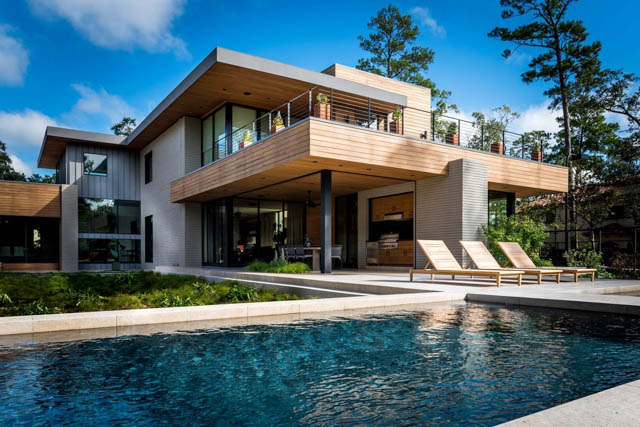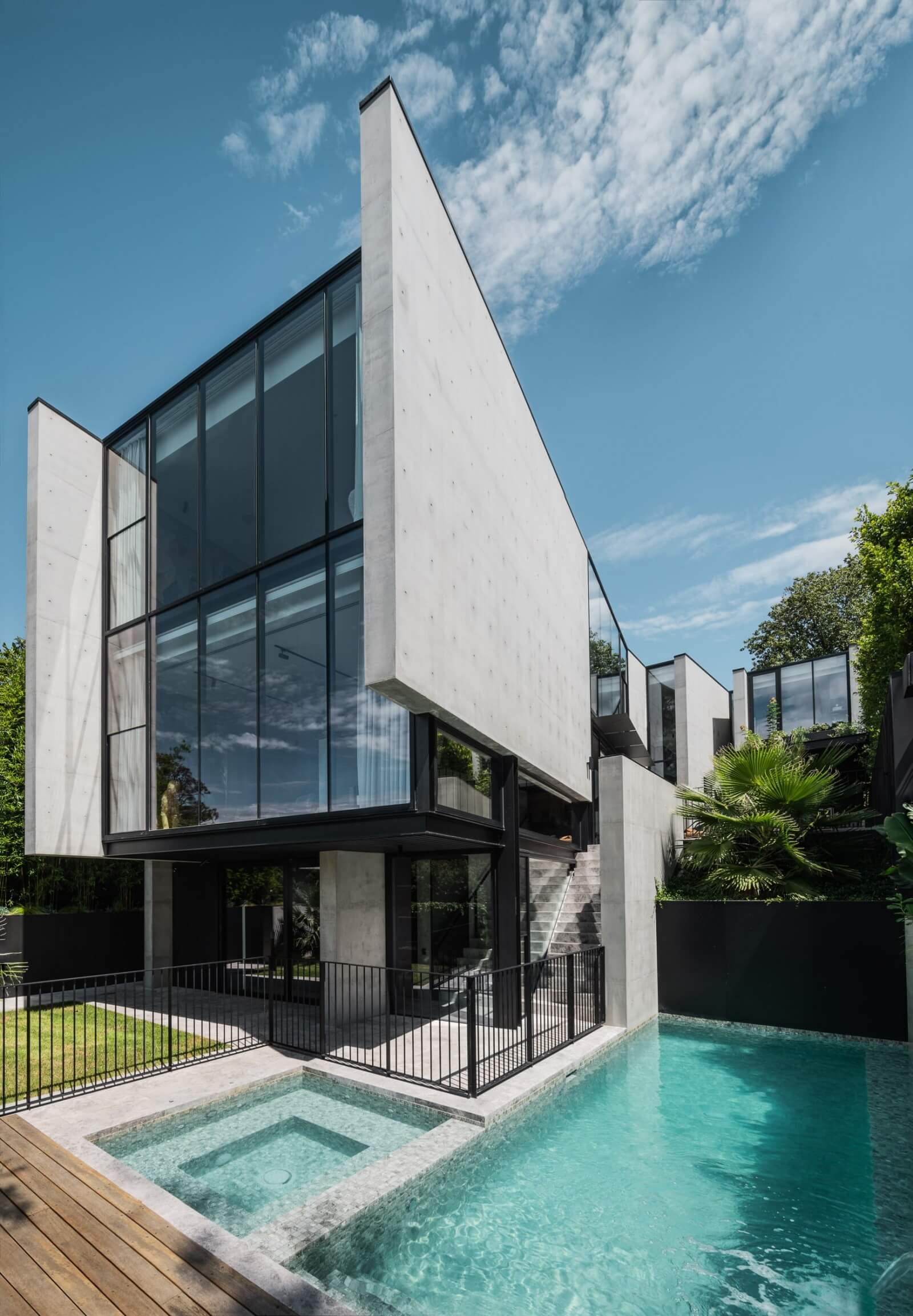Exactly How Residential Architects Produce Custom-made Homes for each Way Of Life
The process through which domestic engineers style customized homes is a nuanced interplay of recognizing client needs and equating those insights into functional home. Via detailed appointments and making use of layout tools, designers record the significance of their customers' way of livings, guaranteeing that each home reflects personal worths and goals. This collaborative technique expands beyond preliminary ideas, integrating ingenious innovations and lasting practices to boost everyday living. As we discover the elaborate steps associated with this transformative process, a deeper appreciation for the engineer's duty in forming unique environments begins to emerge.
Recognizing Customer Needs

Efficient communication is critical in this procedure. Engineers should urge clients to verbalize their lifestyles, family members dynamics, and future aspirations, guaranteeing that the layout reflects their one-of-a-kind identity. By employing devices such as surveys, interviews, and visual studies, designers can collect useful insights into the client's vision.
In addition, recognizing the context in which a home will exist is important. Engineers should consider elements such as the website qualities, local climate, and cultural impacts that can impact the style. This alternative strategy permits the production of rooms that are not only cosmetically pleasing but likewise sensible and sustainable.
Eventually, a deep understanding of client needs allows architects to develop tailored homes that boost the lifestyle for their residents, fostering a sense of belonging and comfort within their living atmospheres.
Design Refine and Cooperation
The design process in household architecture is a dynamic interaction of imagination and collaboration, where designers, clients, and different stakeholders work very closely to bring a vision to life. This iterative journey generally starts with a collection of meetings to establish a comprehensive understanding of the customer's goals, choices, and way of living requirements. During these conversations, designers gather vital info, allowing them to conceive layouts that straighten with the client's vision.
Adhering to the first assessments, the layout stage progresses through sketches, 3D versions, and building renderings. This visual communication serves as a device for designers to existing concepts, while additionally welcoming client responses, guaranteeing that the last layout reverberates with their expectations. Effective partnership with engineers, service providers, and interior developers is essential during this phase, as it makes sure that all practical facets of the job are flawlessly integrated.

Incorporating Way Of Life Components
Including way of life elements into household style is essential for creating rooms that try these out genuinely reverberate with the citizens. residential architecture homes. This process starts with comprehending the special demands, choices, and daily regimens of the property owners. Architects take part in extensive conversations to uncover just how the individual or household uses their room, whether for entertaining guests, pursuing leisure activities, or looking for silent hideaway
As soon as these insights are collected, architects can tailor layout attributes that improve daily experiences. For circumstances, open flooring plans may be created for families that prioritize togetherness, while devoted work areas can be integrated for those that function from home. Exterior locations, such as yards or patio areas, can be emphasized for households that delight in exterior activities or amusing.
In addition, adaptability is a crucial factor to consider; multi-functional areas permit for versatility as way of lives progress gradually. Customized storage services can likewise be included to meet certain organization requirements, guaranteeing that the home continues to be clutter-free and functional. Inevitably, by thoughtfully weaving way of living components right into the architectural material, household designers develop customized homes that not only accomplish visual desires but likewise dramatically boost the quality of life for their customers.
Lasting and Smart Design
Smart and lasting design increasingly plays a critical role in residential style, as homeowners seek to lessen their environmental effect while boosting their living experiences. Designers are now incorporating environment-friendly products, energy-efficient systems, and innovative modern technologies to develop homes that not only fulfill aesthetic wishes but additionally serve the planet.
Including renewable resource resources, such as photovoltaic panels and wind turbines, enables homeowners to harness natural deposits, substantially minimizing dependence on standard power grids. Smart home modern technologies further enhance sustainability by maximizing energy usage with automated systems that control cooling, heating, and illumination based upon tenancy and preferences.
In addition, making use of lasting structure products-- like reclaimed wood, bamboo, and reused steel-- promotes a round economic situation, reducing waste and resource usage. Designers likewise stress easy style concepts, making sure homes are oriented for optimum all-natural light and ventilation, thus lessening the requirement for fabricated heating & cooling.
Along with ecological advantages, sustainable and clever layout contributes to the general convenience and health and wellness of locals. By prioritizing indoor air quality and all-natural aspects, architects create rooms that foster health, enabling house owners to prosper attuned to their setting.
Settling and Implementing Strategies
Completing and applying plans is a crucial stage in the domestic architecture process, where the vision of a personalized home begins to materialize. This stage involves precise focus to detail, ensuring that every aspect of the layout is specifically articulated and ready for construction. residential architecture homes. Engineers team up carefully with customers to review final plans, resolving any type of last-minute modifications or issues, while guaranteeing that all elements straighten with the property owner's way of living demands
Once strategies are completed, engineers prepare extensive construction records, consisting of thorough illustrations and requirements that function as a plan for building contractors. These records detail materials, coatings, official statement and installation methods, offering clarity for service providers and subcontractors. Furthermore, securing essential permits and adhering to local building codes is essential, as it makes sure conformity and smooth task implementation.
By promoting a collaborative atmosphere, engineers can guarantee that the implementation aligns with the initial vision. Ultimately, this essential phase changes ideas right into fact, laying the structure for a home that mirrors the unique way of living and choices of its occupants.
Final Thought
In final thought, domestic engineers play a crucial role in crafting tailored homes that cater to diverse way of livings. With meticulous understanding of customer demands, collective style processes, and the integration of way of life components, engineers guarantee that each home shows private preferences.
The procedure by which property engineers design tailored homes is a nuanced interplay of comprehending client needs and translating those understandings right into practical living spaces. Via comprehensive appointments and the usage of design devices, engineers record the significance of their clients' lifestyles, ensuring that each home reflects personal worths and desires. Engineers must urge customers to verbalize their way of lives, household characteristics, and future goals, making certain that the design shows their special identity.The style process in residential architecture is a dynamic interplay directory of imagination and partnership, where designers, clients, and numerous stakeholders work very closely to bring a vision to life - residential architecture homes. Via thorough understanding of client needs, collective style processes, and the integration of lifestyle aspects, designers make certain that each home shows private preferences